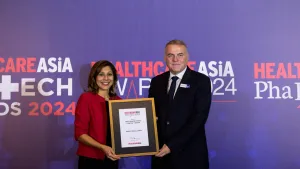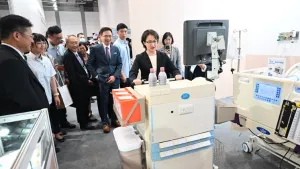
Here are 3 factors that shape UAE's post-pandemic healthcare sector
In the first of four parts, the UAE's resilience intra- and post-pandemic were discussed.
The Oxford Business Group released its United Arab Emirates (UAE) COVID-19 Response Report on 7 February. It focused on four areas, namely Resilience, Response, Recovery, and Reinvention.
Sustained investment in improving health care systems
According to the report, The UAE and constituent emirates have developed a track record for effective health policies backed by sustained investment and openness to private innovation. However, federal government health expenditure declined in absolute terms in the years before the pandemic, partly attributed to the growth in high-quality private health care facilities, encouraged by an enabling regulatory environment. The public and private segments operated in close alignment, which explained the success in reducing deaths from non-communicable diseases (NCDs). While medical infrastructure in the UAE is spread throughout the emirates, Abu Dhabi boasts the largest number of private and public hospitals.
According to data, the UAE outperformed many of its Gulf Cooperation Council (GCC) peers in key pre-pandemic health metrics. For example, the UAE spent 4.2% of its GDP on health expenditure in 2018, with a ratio of 2.528 doctors per 1,000 patients. It also outperformed its peers in the Middle East and North Africa in health indicators linked to increased COVID-19 risk, such as NCD deaths, hypertension, diabetes, and smoking.
Demographic advantages that reduced the risk of a severe health-related crisis
The UAE enjoys several demographic strengths that are conducive to both economic growth and the mitigation of severe COVID-19 risk factors. Thanks to its relatively youthful population of citizens and migrants, a smaller percentage of its population was considered at risk compared to most other high-income countries, as old age was scientifically considered to be a major determinant of severe reactions to the virus.
The UAE's 65+ demographic is not only smaller than that of the Organisation for Economic Cooperation and Development (OECD) average but also healthier, as the country has made significant progress in reducing the prevalence of many NCDs, meeting its national health goals before the pandemic. In 2019, the UAE's age dependency ratio was 19%, which refers to the share of the population under 15 years or above 65 years, and therefore considered dependent upon the working-age population. This figure is low compared to other countries from the GCC and around the world. For example, Saudi Arabia had an age dependency ratio of 39%, while Japan's stood at 70%. Lower dependency ratios reflect conditions favourable to economic growth and, in the case of pandemics, smaller at-risk populations.
SEHA's role in the health care system
The Abu Dhabi Health Services Company, also known as SEHA, plays a central role in Abu Dhabi’s health care ecosystem. It managed all public hospitals and clinics and provided care to both citizens and expatriates across Abu Dhabi. SEHA has an active partnership with the United States' Mayo Clinic, which is helping to raise the quality of care and services in the emirate to international standards. The organisation’s focus on innovation, flexibility and the effective use of new technologies enabled it to respond swiftly to the challenges presented by the pandemic, and support national efforts to contain the spread and impact of the virus.
"Public health institutions are the backbone of the UAE's health care system and the drivers of Abu Dhabi’s health care ecosystem," said SEHA group CEO Tarek Fathey.
Currently, SEHA has two blood banks, three mobile clinics, four dental centres, 10 disease prevention and screening centres, 14 hospitals with a total of 2,644 beds, 36 primary clinics, and 64 ambulances.


















 Advertise
Advertise


